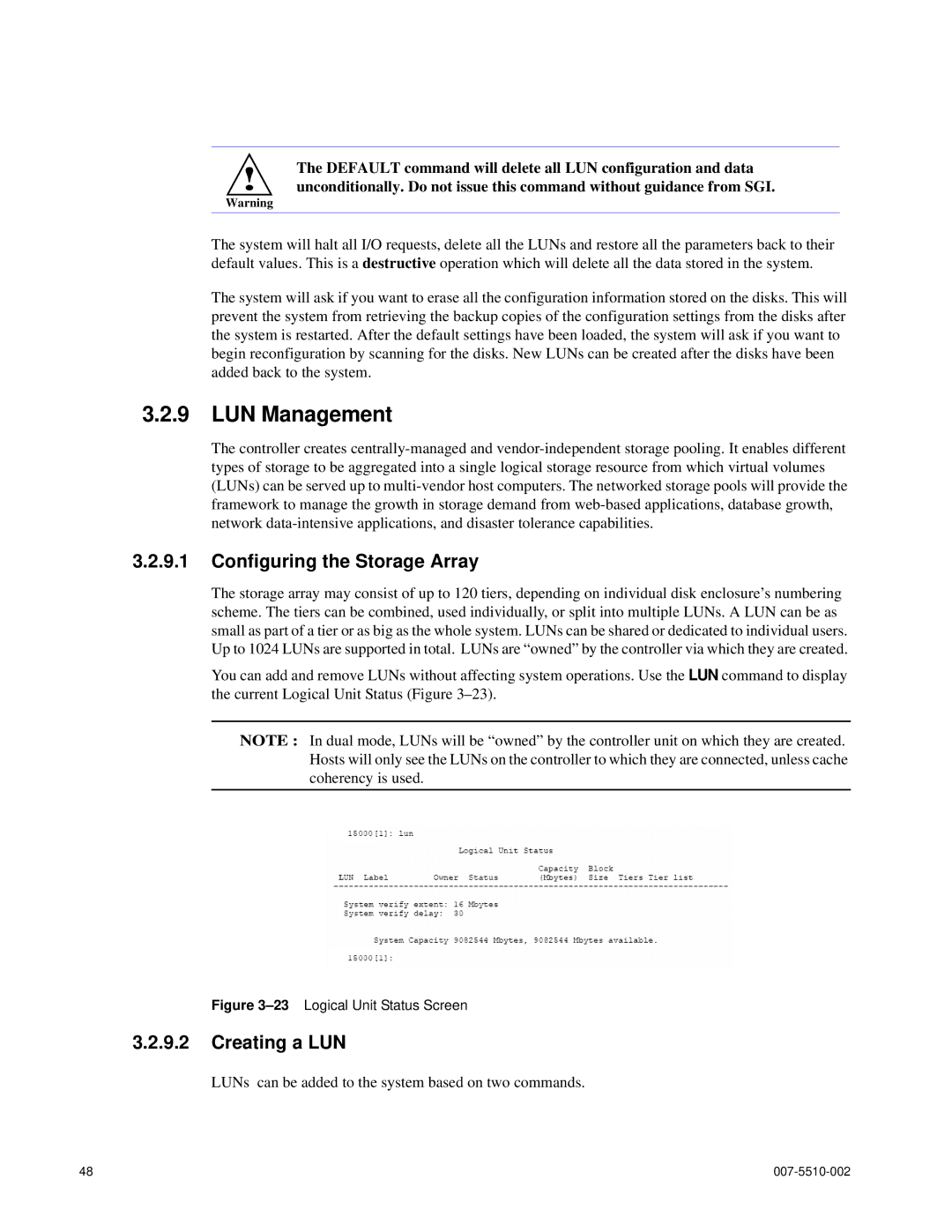
!The DEFAULT command will delete all LUN configuration and data unconditionally. Do not issue this command without guidance from SGI.
Warning
The system will halt all I/O requests, delete all the LUNs and restore all the parameters back to their default values. This is a destructive operation which will delete all the data stored in the system.
The system will ask if you want to erase all the configuration information stored on the disks. This will prevent the system from retrieving the backup copies of the configuration settings from the disks after the system is restarted. After the default settings have been loaded, the system will ask if you want to begin reconfiguration by scanning for the disks. New LUNs can be created after the disks have been added back to the system.
3.2.9LUN Management
The controller creates
3.2.9.1Configuring the Storage Array
The storage array may consist of up to 120 tiers, depending on individual disk enclosure’s numbering scheme. The tiers can be combined, used individually, or split into multiple LUNs. A LUN can be as small as part of a tier or as big as the whole system. LUNs can be shared or dedicated to individual users. Up to 1024 LUNs are supported in total. LUNs are “owned” by the controller via which they are created.
You can add and remove LUNs without affecting system operations. Use the LUN command to display the current Logical Unit Status (Figure
NOTE : In dual mode, LUNs will be “owned” by the controller unit on which they are created. Hosts will only see the LUNs on the controller to which they are connected, unless cache coherency is used.
Figure 3–23 Logical Unit Status Screen
3.2.9.2Creating a LUN
LUNs can be added to the system based on two commands.
48 |
